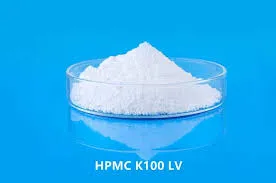
Nov . 09, 2024 03:43 Back to list
MHEC Production Process for Methyl Hydroxyethyl Cellulose Manufacturing Factory
MHEC A Comprehensive Overview of Methyl Hydroxyethyl Cellulose Manufacture
Methyl Hydroxyethyl Cellulose (MHEC) is a cellulose ether widely recognized for its versatile applications across various industries, including construction, pharmaceuticals, food, and personal care. As a water-soluble polymer derived from natural cellulose, MHEC presents unique characteristics that make it an invaluable additive in numerous formulations. This article explores the manufacturing processes, applications, and benefits of MHEC, shedding light on its significance in modern industry.
The Manufacturing Process
The production of MHEC typically involves the alkali treatment of cellulose, followed by the etherification process, where methyl and hydroxyethyl groups are introduced. The process begins with the extraction of cellulose from natural sources like wood or cotton. Once purified and treated with sodium hydroxide, the cellulose undergoes a transformation that facilitates the attachment of ether groups.
The key steps in manufacturing MHEC include
1. Cellulose Extraction The raw material is sourced from sustainable plantations where cellulose can be found in abundance. Wood pulp and cotton linters are common raw materials used.
2. Alkali Treatment The extracted cellulose undergoes treatment with an aqueous sodium hydroxide solution. This step is crucial, as it increases the degree of substitution, creating more active sites for etherification.
3. Etherification In this step, the treated cellulose is reacted with methyl chloride and ethylene oxide in a controlled environment. The resulting product is a cellulose ether with varying degrees of substitution, determined by the ratio of etherifying agents used.
4. Purification and Drying After etherification, the product is washed, filtered, and then dried to obtain the desired powder form of MHEC. The final product is often subjected to quality tests to ensure it meets industry standards.
5. Packaging MHEC is then packaged in moisture-proof bags to maintain stability and prevent degradation, thus ensuring long shelf-life.
Applications of MHEC
MHEC’s unique properties, such as thickening, binding, film-forming, and water retention capabilities, make it suitable for various applications
mhec-methhyl hydroxyethyl cellulose factory

1. Construction In the construction industry, MHEC is widely used in tile adhesives, plaster, and joint compounds. It enhances workability, adhesion, and water retention, ensuring that materials maintain their properties during application.
2. Pharmaceuticals MHEC serves as a binding agent in tablet formulations, improving the stability and delivery of active pharmaceutical ingredients. Its ability to control the release of drugs also makes it valuable in sustained-release formulations.
3. Food Industry As a food additive, MHEC acts as a thickening agent, stabilizer, and emulsifier. It is commonly found in sauces, dairy products, and various processed foods, enhancing texture and prolonging shelf life.
4. Personal Care Products In cosmetics and personal care items, MHEC is used for its film-forming and moisturizing properties. It can be found in creams, lotions, shampoos, and conditioners, providing a desirable texture and feel.
Benefits of MHEC
The growing preference for MHEC in various formulations can be attributed to its numerous benefits
- Eco-Friendly As a natural polymer derived from cellulose, MHEC is biodegradable, making it an environmentally friendly choice compared to synthetic alternatives.
- Versatility MHEC's adaptability allows it to be customized for specific applications by adjusting its viscosity and solubility properties.
- Stability MHEC provides excellent stability and helps prevent phase separation in formulations, ensuring consistent quality and performance.
- Cost-Effective The scalability of MHEC production makes it a cost-effective solution for various industrial applications, providing extensive benefits without significantly increasing costs.
In conclusion, Methyl Hydroxyethyl Cellulose (MHEC) plays a crucial role across several industries, thanks to its outstanding properties and adaptability. As the demand for sustainable and efficient materials continues to grow, MHEC stands out as a preferred choice for formulators looking to enhance product performance while adhering to eco-friendly practices. The future looks promising for MHEC, paving the way for further innovations and developments in the field of cellulose derivatives.
-
Versatile Hpmc Uses in Different Industries
NewsJun.19,2025
-
Redispersible Powder's Role in Enhancing Durability of Construction Products
NewsJun.19,2025
-
Hydroxyethyl Cellulose Applications Driving Green Industrial Processes
NewsJun.19,2025
-
Exploring Different Redispersible Polymer Powder
NewsJun.19,2025
-
Choosing the Right Mortar Bonding Agent
NewsJun.19,2025
-
Applications and Significance of China Hpmc in Modern Industries
NewsJun.19,2025







